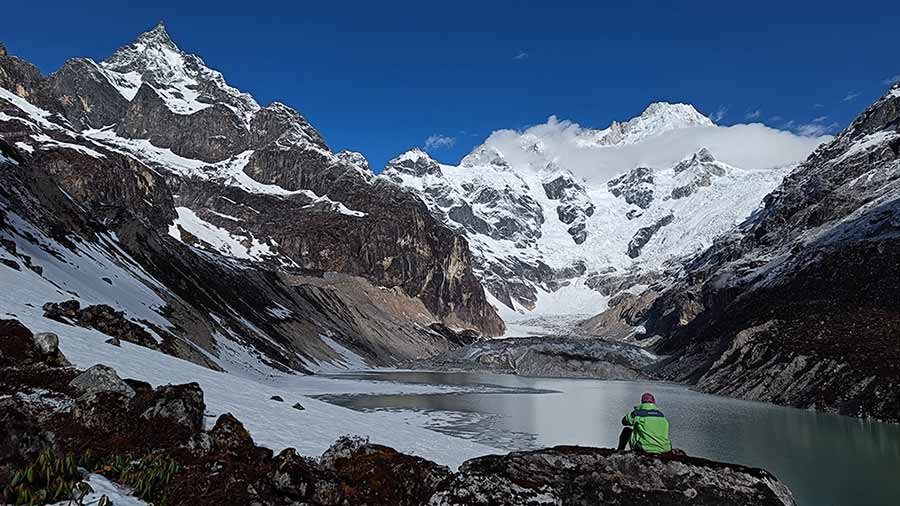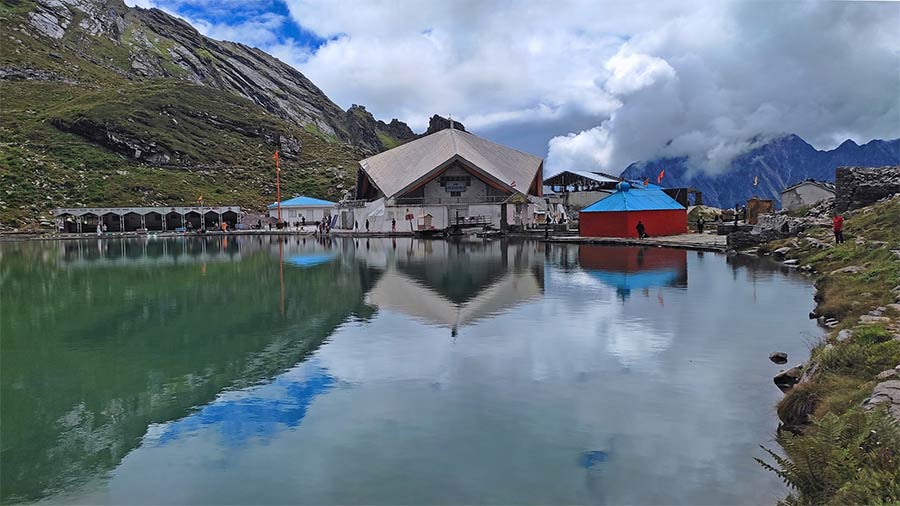The state of Sikkim is known for its amazing mountain views. Khangchendzonga (also spelt Kanchenjunga), the third highest peak in the world, can be seen towering above the green hills from most parts of the state. The more adventurous ones trek up the Dzongri-Goechala route to take a closer look at the mighty Kanchenjunga and its sister peaks. But sadly, for decades, this has been the only popular trek route in Sikkim, which takes people near to the towering Kanchenjunga and her sister peaks. Green Lake Trek is another trek option in north Sikkim, which leads to the north-east base of Kanchenjunga. However, because of entry formalities and expensive permits, the trek has never become popular.
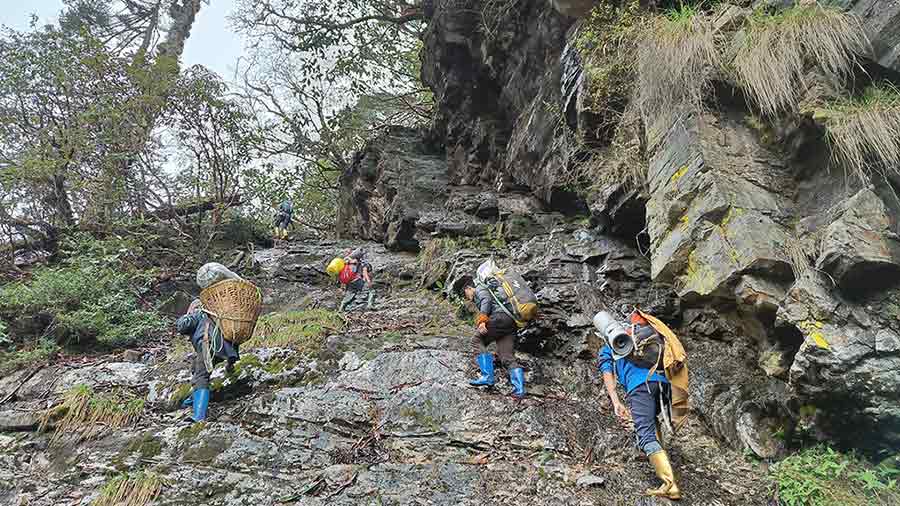
Trekkers on the way to the glacier Anindya Mukherjee
Unlike the other Himalayan states and UTs, Sikkim always has a limited trekking option, but the opportunities have never been less. In recent times, the tourism department of Sikkim has come up with the possibilities of developing some new trek routes. Anindya Mukherjee, a noted mountaineer and explorer from Kolkata, was given the responsibility of exploring new trekking routes in Sikkim.
Mukherjee has been exploring the great east ridge of Kanchenjunga since 2011. In 2022, he was appointed by the Department of Tourism & Civil Aviation, Government of Sikkim, to survey and evaluate possibilities of developing several new, eco-friendly and sustainable trails leading to the interiors of the great east ridge of Kanchenjunga. The route/trails, if made, will lead to the base of several snow peaks including Siniolchu, considered by many as the most beautiful peak in the world.

Photographer Vittorio Sella captured the beautiful conical peak in his iconic black-and-white photograph Wikipedia
Noted explorer Douglas Freshfield, who explored the area near Siniolchu, described it as “The most superb triumph of mountain architecture and the most beautiful snow mountain in the world.” His team photographer, Vittorio Sella, captured the beautiful conical peak in his iconic black-and-white photograph. Freshfield explored the northern regions of the great east ridge, with Sella photographing the iconic peak from the north. On the other hand, Mukherjee explored the southern part of the great east ridge with Siniolchu in the north. His newly discovered route leads to the Zumthul Phuk Glacier, with a beautiful glacial lake.
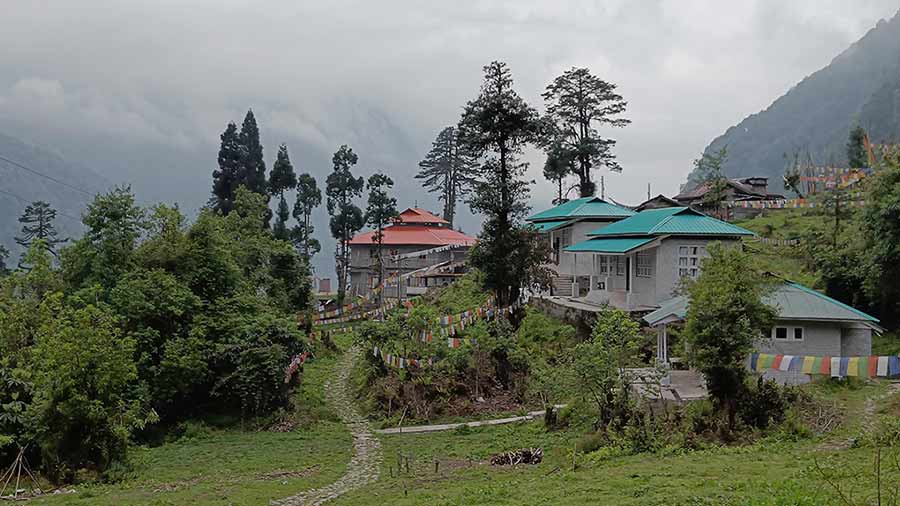
The Tholung gompa area Anindya Mukherjee
Initial part of Mukherjee’s exploratory route followed the pilgrim route to the Tholung Monastery, which lies in the Dzongu region of north Sikkim. The monastery is just a day’s trek from the nearest road-head Bey. From Tholung, the trail leads north to Temrong, a day’s trek ahead. From Temrong, the trail turns left and enters uncharted territories. Mukherjee and his team (Mingdup Lepcha and Phurtenji Sherpa) of locals from Dzongu region made their way through the Zumthul Phuk River gorge towards the Zumthul Phuk Glacier. Mukherjee feels that a proper trail along the route would help trekkers reach the glacier snout in two days from Temrong.
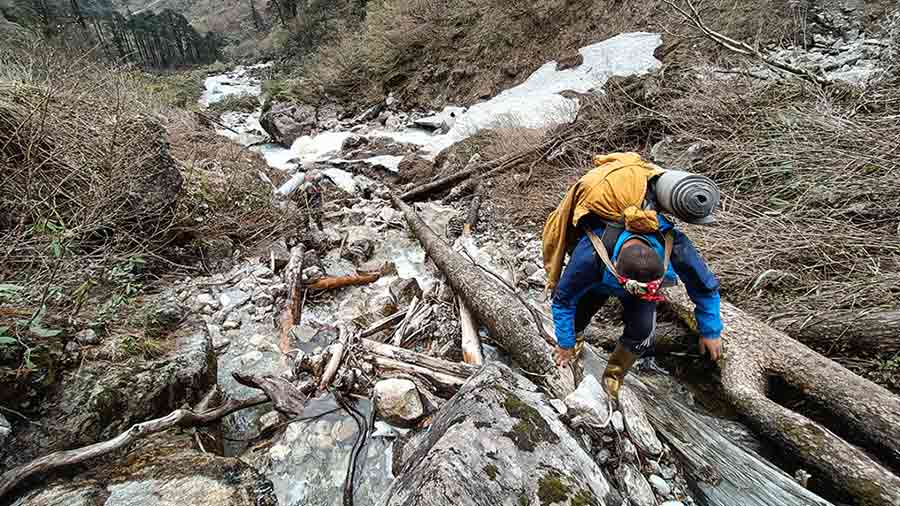
Negotiating the avalanche debris was one of the first challenges of the exploration Anindya Mukherjee
Mukherjee’s team was the first ever to visit the region and get a closer view of the south-east face of the gorgeous Siniolchu peak. But the centre of attraction was a beautiful undiscovered and unnamed glacial lake, about the size of Tsomgo Lake (Changgu Lake). Although it is a beautiful sight, Mukherjee warns that the lake is a result of global warming. In the last few decades, major glaciers across the world are retarding resulting in glacial lakes. Mukherjee suggests an immediate geological survey of the region needs to be done to measure the effect of global warming in the region.
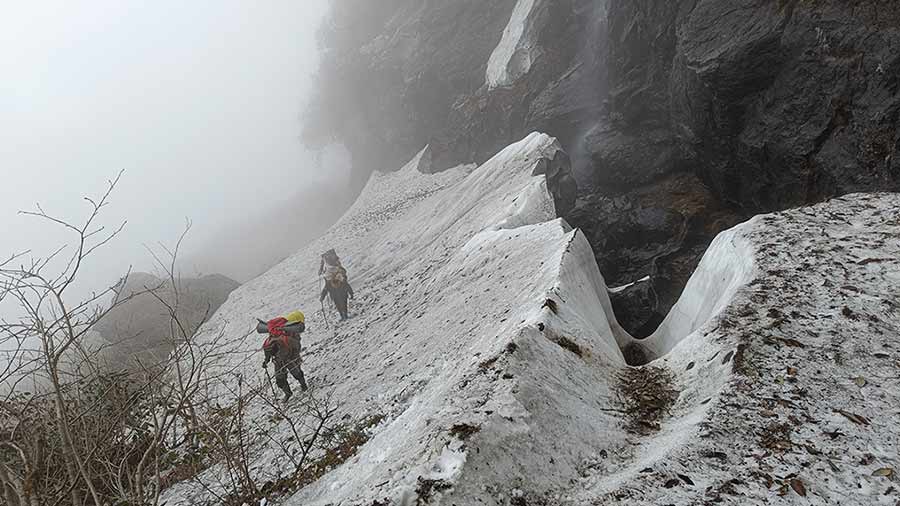
The weather gave the explorers only 4-5 hours everyday before it was a complete whiteout Anindya Mukherjee
On the other hand, Mukherjee is hopeful that his discovery may lead to a new trek route in Sikkim and trekkers can try their hands on a relatively easy route to reach the base of one of the most beautiful peaks of the Himalayas. Mukherjee also warns that over-tourism can spark a disaster to the already fragile ecosystem and bring disaster to one of the least physically explored areas of the world.
